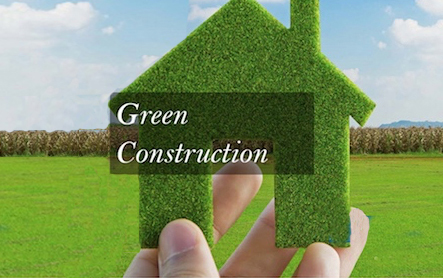Can you imagine a home that self-regulates just like the human body? In the winter, it is warm. In the summer, it is cool. The magic of sustainable building is that this isn’t just the stuff of imagination – it’s the stuff of reality.
On a hot, summer’s day, you pull into your driveway, climb out of your car, and see a stout pipe with a protective “hat” poking out of the ground. It dives down into the soil and follows you as you go to your front door. As it swings open, the cool air of the foyer hits you. You don’t have air conditioning, but your home is comfortably cool all the same. What makes your home cool despite the hot summer temperatures? Passive cooling, which is a combination of energy-free and for the most part, non-mechanical, ways to regulate temperature.
The stout, wide pipe that greeted you in your driveway is buried 5 feet underground where it is always 55 degrees Fahrenheit. (This is true all across the world except for the 2 poles.) As hot air enters the pipe and sent underground with a fan, it is cooled and enters your home via a space between your double walls and double-paned windows. This space is one of several keys to your self-regulating home. Because heat rises, the cool air is pulled upwards into a special attic area where the heat will live and leave your home the perfect place to retreat from the outdoor heat. As the cool air travels throughout the wall space of your home, it mingles with the hot air and cools each room to a comfortable temperature. You can control the temperature with dampers just like you control the amount of air coming into a room with modern-day air conditioners.
A second key to maintaining the cool air is a concept called the “closed envelope.” In order for the cool air to remain in your home, the house must be an enclosed space, a place where the cool air cannot escape through nooks and crannies. You achieved this by ensuring proper insulation. You used sustainable materials to build the double walls that have high insulation value. You also ensured windows and doors that were well-insulated have no space where air could escape in or out of your home. Even a hole the size of a pencil can effect an energy bill significantly! This care you put into your home means much less energy is needed to heat or cool your home in any season. You are lucky that you were able to have this system installed because you built a new house. The system needs double walls that can not be retrofitted into existing homes.
 After spending a summer and fall in your sustainable home, it is now time to keep it warm. Because you built your home south-facing, you can take advantage of the heat of the sun to keep you cozy. On the south-facing side of the house, you have wall-to-ceiling double-paned windows that catch the sunlight. The opposite wall is made of masonry or concrete, both of which absorb the heat and release it slowly to warm your house. If you’re still a little chilly, your well-insulated home made with sustainable materials takes very little energy to add extra heat. You can turn on the heater and enjoy its warmth with a fraction of the cost of using a heater without a passive heating system.
After spending a summer and fall in your sustainable home, it is now time to keep it warm. Because you built your home south-facing, you can take advantage of the heat of the sun to keep you cozy. On the south-facing side of the house, you have wall-to-ceiling double-paned windows that catch the sunlight. The opposite wall is made of masonry or concrete, both of which absorb the heat and release it slowly to warm your house. If you’re still a little chilly, your well-insulated home made with sustainable materials takes very little energy to add extra heat. You can turn on the heater and enjoy its warmth with a fraction of the cost of using a heater without a passive heating system.
Your home costs only a small amount more to build than a non-sustainable house, but you reap the savings from your decision each month when the bills come in. Thousands of homes have been built on passive principles like yours with great success.
P.S. The system described here is only one portion of passive design. Some other passive strategies include solar panels, solar chimneys, weather stripping, insulation (fiberglass, rigid styrofoam, rock wool, multi ceramics, aerogel), the orientation of the building, foliage and trees, double walls (a powerful way of keeping the efficiency of a closed envelope), awnings, window treatments, and skylights.
LINKS:
DRAWINGS AND EXPLANATIONS OF VARIOUS PASSIVE COOLING SYSTEMS.
www.pinterest.com/hoboontheroad/passive-cooling-of-house-ideas-by-andy-lee-graham
MORE INFO ON PASSIVE COOLING AND SIMILAR TECHNIQUES
https://www.sciencedirect.com/science/article/pii/S209526351400003X
AUSTRALIAN GOVERNMENT’S GUIDE TO SUSTAINABLE HOMES
https://www.yourhome.gov.au/passive-design

